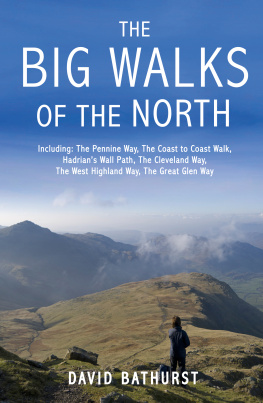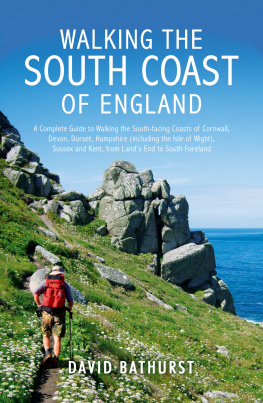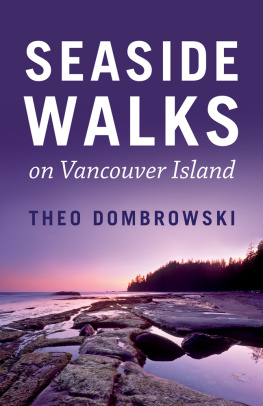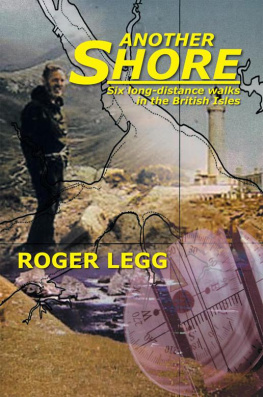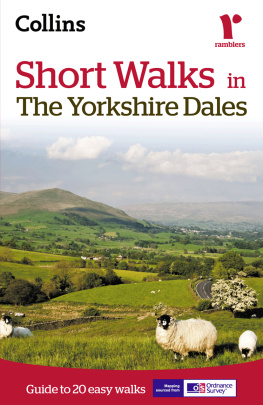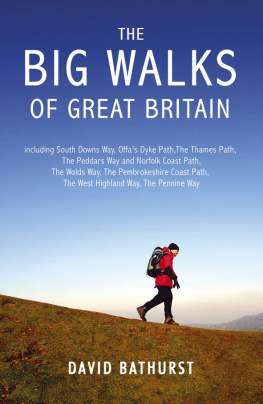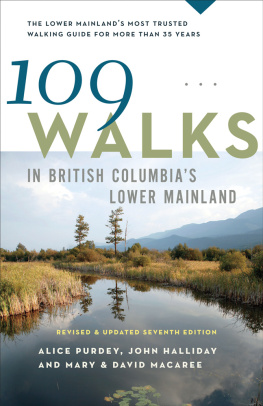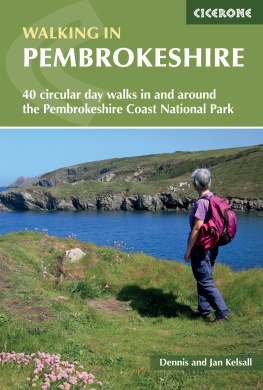About this Book
Despite the increasingly sophisticated range of leisure pursuits and interests available to us, walking still enjoys huge popularity as a form of recreation. People like to walk for different reasons. Some do it simply for the health benefits, and arent fussy where their walk takes them. Some like to have a definite objective, such as a place of historic interest or a hilltop. Some will want to use their walking to trace our rich industrial, social or cultural heritage. Some like to walk long distances as personal challenges and/or to raise money for deserving causes. And some walk for all these reasons. As the popularity of walking has increased, so has the number of name long-distance walking routes across Great Britain, providing challenging, invigorating and often exciting walking to and through numerous places of immense scenic beauty and historic interest. In short, all the reasons people like to walk come together in the walking of a long-distance route. The purpose of this book is to provide an overview of what can be described as the Big Walks, namely the top long-distance walking routes, in the north of Great Britain. Included either in this book or in the companion volume covering the south of Great Britain are all 15 of the National Trails of England and Wales, the four Scottish National Long Distance Walking Routes, and the Coast To Coast Walk which although without official National Trail status is one of the best-loved routes in the Great Britain. They are all tremendous walks, all with their distinctive character. Theres the Speyside Way, for instance, through the heart of Scotlands whisky country; the Great Glen Way taking you from the foot of Ben Nevis to the jaws of the Loch Ness Monster; the Coast To Coast Walk, following in the footsteps of that doyen of walkers, Alfred Wainwright; and the Pennine Way, the ultimate walking challenge in Great Britain and the father of all Big Walks. Each has its store of treasures, waiting to be explored and to provide an unforgettable tapestry of magical walking memories.
This book aims to provide a succinct and light-hearted description of each route covered, providing information as to the nature and relative difficulty of the terrain, highlighting places of scenic and historic interest and offering advice to those contemplating the challenge. It does not pretend to give every route detail, but to be a reference work providing an accessible and user-friendly guide to the relative merits of each Big Walk so you can decide which one you like the look of the most from the detail given. And if for whatever reason you are unable to undertake any of them, you can enjoy following each route from the comfort of your armchair. A chapter is given over to each route: each chapter begins with the route length, overall assessment of difficulty, and highlights of the walk to be described. The walk is then broken down into sections. There is no magic in the section divides: the aim is for each section to start and finish at a place that is reasonably easily accessible by road or rail, and to equate to what a fit walker should be able to accomplish in a day. Where a section is very long, it will be because of the lack of amenities or transport opportunities available on it. Mileages are given for each section and cumulative mileages given in brackets throughout the narrative. All this will assist in the planning process. Please note that every effort has been taken to ensure the accuracy of the information in the book, so that you know exactly what youre taking on, but inevitably there are changes to routes and land use which could not be anticipated at the time of writing.
Becoming a Big Walker
Bearing in mind the shortest route in this book is 73 miles, and the longest is 255 miles, youll quickly appreciate the magnitude of the task facing you should you decide to take one of them on. You may be an experienced rambler who simply wants some focus for your walking, in which case you may be able to tackle any of these Big Walks with ease and with little need to peruse the rest of this introduction. But if your idea of a long hike is the 200-yd walk up the road to buy a carton of milk, you clearly have some work to do before tackling even the easiest of the described routes. You need to get properly fit. Dont pigeonhole it with all your other New Years resolutions (come New Years Day, its bound to be pouring with rain or freezing cold anyway). Start now! Begin by aiming for 30 minutes brisk walking every day dont skip it one day and tell yourself youll make up for it the next, as the chances are you wont. Having established the minimum, make time to take yourself off on longer walks, up to say three or four hours at a stretch, aiming ultimately to manage a full days walk. Where you go is up to you you may be happy tramping round the vicinity of your home town or village, but you may wish to explore further afield. You might, of course, hate it (in which case you probably wouldnt be reading this book). On the other hand, you may get hooked. Romantic evenings out are ditched in favour of intensive studies of Ordnance Survey maps. Weekend shopping trips revolve around visits to outdoor shops in search of a particular brand of hi-tech bootlaces. You actually read the care instructions that come with a new pair of gaiters. You startle fellow commuters by trying out new walking boots with your suit when hurrying to catch the 7.39. You start subscribing to a walking magazine and are able to answer a few clues of the walkers crossword. You no longer feel self-conscious in a bobble hat. You bore your dinner guests with statistical and photographic records of your most recent walking endeavours. And the present that excites you most on Christmas morning is a gift-wrapped multi-pack of perfumed sneaker balls.

